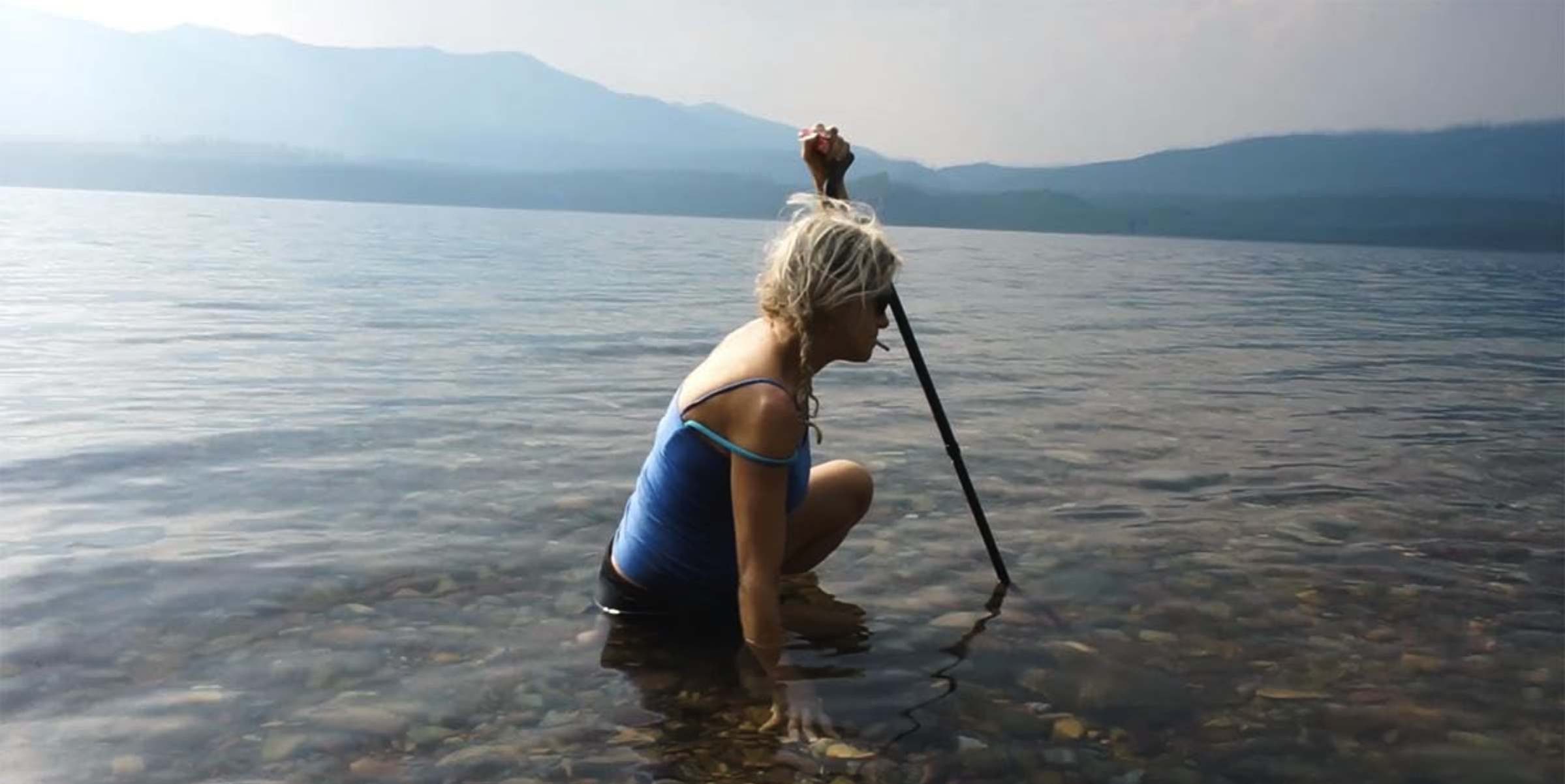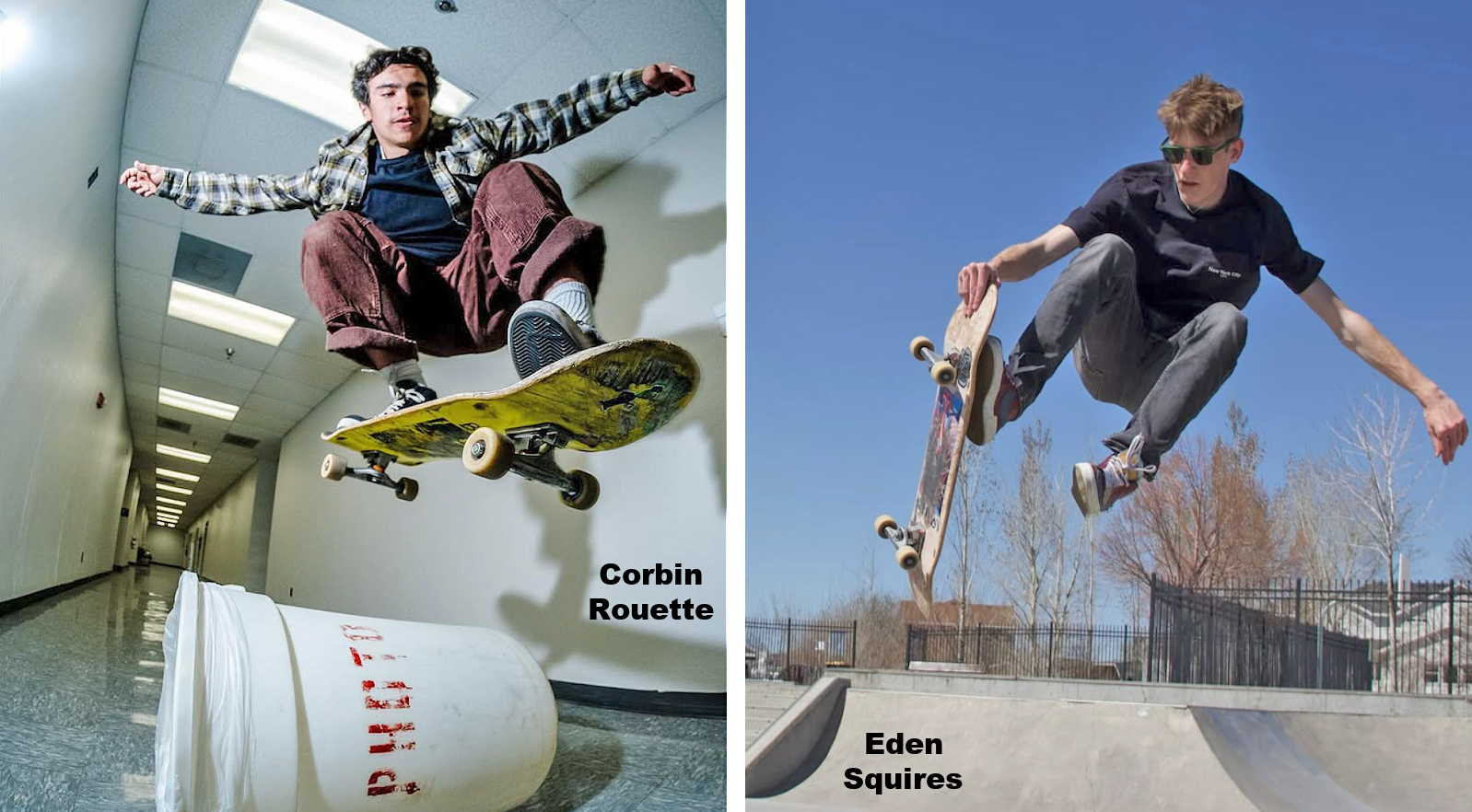
Lens of time: School of Art plays part in Millennium Camera
February 9, 2024By Mikayla Mace Kelley, University Communications
On Tumamoc Hill, hikers climb and descend daily. Animals skitter across the desert floor for years. Saguaros will grow and die over decades, sometimes centuries. But for a millennium, a photographic camera will stand sentinel over Tucson, prompting passersby to stop and think about what the future may hold.
Dubbed the Millennium Camera, the device was dreamed up by the experimental philosopher Jonathon Keats, a research associate at the University of Arizona College of Fine Arts (CFA).
(The Arizona Institute for Resilience helped fund the camera through the CFA Arts | Humanities | Resilience grants program, with support and guidance from School of Art Professor Ellen McMahon and Associate Professor Carissa DiCindio.)

For a camera to last so long, it must be simple. Through a pin-sized hole in a thin sheet of 24-karat gold, light will slip into a small copper cylinder mounted atop a steel pole. Over 10 centuries, sunlight reflected from Tucson’s landscape will slowly fade a light-sensitive surface coated in many thin layers of rose madder, an oil paint pigment. When future humans open the camera in 1,000 years, they will see an extremely long exposure image of Tucson through all its future iterations.
Keats and a team of researchers from the Desert Laboratory on Tumamoc Hill installed the camera next to a bench facing west over the Star Pass neighborhood. The bench invites a pause in the hike and the camera encourages hikers to imagine what the future will hold, Keats said.
“Most people have a pretty bleak outlook on what lies ahead,” he said. “It’s easy to imagine that people in 1,000 years could see a version of Tucson that is far worse than what we see today, but the fact that we can imagine it is not a bad thing. It’s actually a good thing, because if we can imagine that, then we can also imagine what else might happen, and therefore it might motivate us to take action to shape our future.”
Making a camera – and a city – that will last
Conventional cameras typically rely on quick chemical reactions (or more recently, digital technology) to capture an image. The problem is that future humans might not have the technical knowledge to process images in specific ways nor have the technology to do so.
What’s more, there is no conventional photographic process that is insensitive enough to be able to take a photograph over a millennium, Keats said, which is what led him to the idea of sun-faded pigment. That rose madder will fade at the correct rate is an educated guess on Keats’ part.
“One thousand years is a long time and there are so many reasons why this might not work,” Keats said. “The camera might not even be around in a millennium. There are forces of nature and decisions people make, whether administrative or criminal, that could result in the camera not lasting.”
If the camera does last, however, Keats outlines what we can assume the final image will look like: The landscape’s most steadfast features will appear sharpest (although the land is not completely stable, so there will be some inevitable blur to the image). Conversely, the most dynamic parts will be softest. Sudden changes will result in what will look like multiple images overlapped.
“Let’s take a really dramatic case where all the housing is removed 500 years in the future,” Keats said. “What will happen then is the mountains will be clear and sharp and opaque, and the housing will be ghostly. All change will be superimposed on one image that can be reconstructed layer by layer in terms of interpretation of the final image.”
But as much as Keats hopes to provide the future with a record of the past, he also wants to encourage people of today to plan for the future. Specifically, he thinks we should think through where populations might continue to sprawl on the landscape and reflect on that growth in relationship to the natural environment, something he said we need to be doing urgently.
“By no means is the camera making a statement about development – about how we should build the city or not going forward,” Keats said. “It is set there to invite us to ask questions and to enter into conversation and invite the perspective of future generations in the sense that they’re in our minds.”
Keats is adamant that the camera is not opened before 1,000 years.
“If we open in the interim, then it diminishes the imagining that we need to be doing,” he said.
A global perspective
To determine the best location for the camera – somewhere accessible to the community that looks out over a dynamic part of the city – Keats had many conversations with people with deep ties to the hill, including the Desert Laboratory’s director of operations, Clark Reddin, and community outreach assistant Robert Villa.
“Tumamoc Hill has a very deep relationship with the people of Tucson and the hill has a history to it that has this great vantage metaphorically and literally for looking across generations,” Keats said. “The petroglyphs on Tumamoc Hill, for example, are a record of people looking very carefully at their environment and leaving a trace of what they’ve seen. That is really a form of communication across generations. In the same spirit, the Millennium Camera provides a way to observe and interact.”
Keats wants to install at least one more camera on Tumamoc Hill looking out in a different direction, perhaps eastward overlooking downtown Tucson. The two views will mirror each other, and reveal the dynamics of human interaction with the environment.
Contingent on funding, he has also identified the Santa Rita Experimental Range as another Millennium Camera site.
Experimental Range director Brett Blum and Keats identified a location “where the future is fascinatingly and deeply uncertain – an interface between the natural and human environments,” Keats said. As on Tumamoc Hill, it is also a place where the public can engage with the camera and think about the future.
He is also looking to install the cameras around the globe. In China, he is planning to put one in Chongqing, as well as in Griffith Park in Los Angeles. In May, he will install one in the Austrian Alps.
“This project depends on doing this in many places all over the world,” Keats said. “I hope this leads to a planetary process of reimagining planet Earth for future generations.”
Background on funding for camera
In 2022, when McMahon heard that Keats was working on Tumamaoc Hill as a research associate, she contacted him and learned that his Millennium camera project was not sufficiently funded to take it to completion.

Knowing that his project would benefit from stronger connections with campus as a whole, and the School of Art in particular, McMahon introduced Keats to DiCindio. Her research centers on art museum education, with a specific focus on museum-community partnerships and creating opportunities for dialogue and connection in art museum programming.
Meanwhile the Arizona Institute for Resilience (AIR) transferred funds to the College of Fine Arts to support five projects that demonstrate how the arts build resilience. McMahon created a call for proposals, which was shared with all faculty in the CFA, College of Architecture, Planning and Landscape Architecture (CAPLA), College of Social & Behavioral Sciences (SBS) and the College of Humanities in late 2022.
AIR’s goal was to support scholarly and creative activities in the Arts and Humanities that advance the institute’s mission of supporting interdisciplinary groups, including with off-campus partners, to address resilience in our natural and human communities. Five projects were selected, and all were featured in the “Ways of Knowing, Ways of Being” exhibition at the Center for Creative Photography in October 2023.
Keats and DiCindio proposed a project which funded the Millennium Camera, three public environmental art workshops and assessment of the impact of the workshops on people’s ecological awareness titled, The Nature of Change: Experiments in Societal Transformation Through Environmental Art on Tumamoc Hill. In addition, McMahon and Jennifer Fields, director of the Office of Societal Impact, received a planning grant from RII to create a proposal for an arts research and integration initiative. This funding supported the “Ways of Knowing, Ways of Being: Arts Research and Integration” exhibition, a related series of workshops guided by Keats at CCP, and assessment of all of the activities.

Jenna Green, a doctoral student in AVCE, and DiCindio conducted a study to better understand how participants continued to think about and engage with ideas from the workshops and Keats’ art — and the effect it had on their own experiences creating art. That involved McMahon, Green and DiCindio conducting focus groups with workshop participants from Keats’ CCP workshops and with the scientist/ artist collaborators who were part of the grant project.
“It was especially rewarding to see how people engaged with the ideas from Jonathon’s work,” DiCindio said. “Their responses, through the art they created, their conversations in the focus groups, and in the reflective statements they wrote, demonstrated how deeply they considered concepts of local ecology and climate futures and the personal connections they made between these concepts and their own lives.”
Added DiCindio: “Jonathan’s project is a great example of how impactful art can be as part of research in ecological issues. I was especially struck by the ways that the participants engaged with the concepts of Jonathon’s work in the workshops and by continuing on in the study.
“I think the potential in this area is limitless,” DiCindio said. “We focused on workshop participants for this study, but it is also really wonderful that many people will engage with his art as public installations.”
The School of Art contributed reporting to this story.







